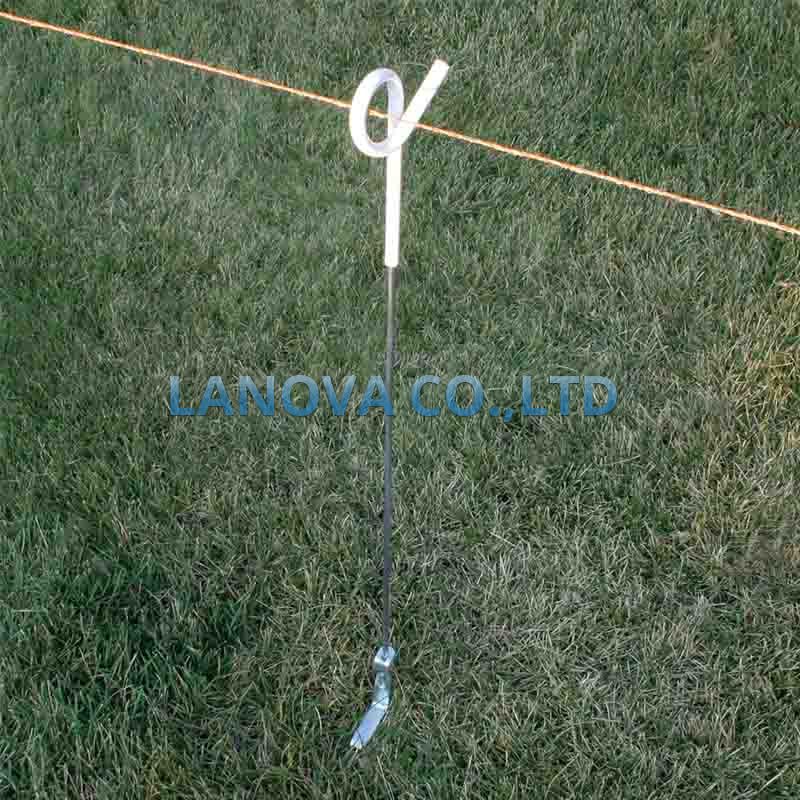Electrifying Safety and Efficiency: The Electric Fence System Unveiled
In the realm of modern agriculture, where technology seamlessly merges with tradition, the electric fence system has emerged as a pioneering solution that redefines security and livestock management. Harnessing the power of electricity, this innovative fencing approach offers a dynamic blend of effectiveness, adaptability, and cost-efficiency. This article delves into the features, benefits, and applications of the electric fence system, shedding light on its transformative impact on agricultural practices.
The Essence of the Electric Fence System
An electric fence system is designed to create an electrified barrier that deters livestock from crossing its boundaries. Unlike conventional fences, electric fences use controlled pulses of electric current to deliver a mild yet startling shock to animals upon contact. This psychological deterrent is achieved through a combination of specialized wires, energizers, insulators, and grounding systems that work in tandem to maintain the integrity of the electrified enclosure.
Key Components and Their Roles
Energizer: The heart of the electric fence system is the energizer, also known as the fence charger. This device generates pulses of electric current, transforming ordinary fencing wires into charged deterrents. Energizers are available in various power levels, with options ranging from battery-operated to solar-powered units.
Fencing Wires: High-tensile steel wires, designed to carry the electric charge, form the physical barrier of the electric fence. These wires are strategically spaced and connected to the energizer, creating an electrified perimeter.
Insulators: Insulators ensure that the electric charge remains contained within the fencing wires. Made from non-conductive materials such as plastic or ceramic, insulators prevent the electric current from being conducted into the ground or other objects.

Grounding System: A proper grounding system is essential for the efficient functioning of the electric fence. Grounding rods are installed in the ground and connected to the energizer, creating a circuit that completes the electrical loop. This grounding prevents the electric charge from dissipating into the soil.
Benefits and Advantages
Effective Deterrent: The controlled electric shock delivered by the system serves as a potent psychological deterrent for livestock. Animals quickly learn to associate the fence with discomfort and avoid contact.
Versatility: Electric fence systems can be customized to suit various livestock types and sizes. They can be adjusted to deliver appropriate shock levels for different animals, ensuring both safety and containment.
Cost-Effective: Electric fences are often more cost-effective than traditional fencing solutions. They require fewer materials and less labor for installation. Moreover, their efficiency in containing animals reduces potential losses from escapes or predation.
Adaptability: Electric fences can be easily installed on a wide range of terrains, including uneven or hilly landscapes. This adaptability makes them suitable for various agricultural settings.
Low Maintenance: Once installed, electric fence systems demand minimal maintenance. Regular inspections and occasional weed trimming are generally sufficient to keep the system operational.
Reduced Land Use: Electric fences require less physical space compared to traditional fences, making efficient use of available land.
Applications of Electric Fence Systems
Livestock Containment: Electric fences are widely used for containing livestock, including cattle, horses, sheep, and goats. They prevent animals from wandering, minimizing conflicts with neighbors and roadways.
Predator Deterrence: Electric fences serve as effective barriers against predators, protecting valuable livestock from potential threats.
Wildlife Exclusion: In agriculture and conservation settings, electric fences are employed to exclude wildlife from sensitive areas or croplands.
Boundary Definition: Electric fences help define property boundaries and restrict access to designated areas.
Conclusion
The electric fence system epitomizes the marriage of modern technology and traditional agricultural practices. With its innovative approach to containment and protection, this system provides an electrifying solution that safeguards livestock, preserves resources, and enhances the efficiency of agricultural operations. As the agricultural landscape continues to evolve, the electric fence system stands as a testament to the power of innovation in shaping the future of farming and land management.



